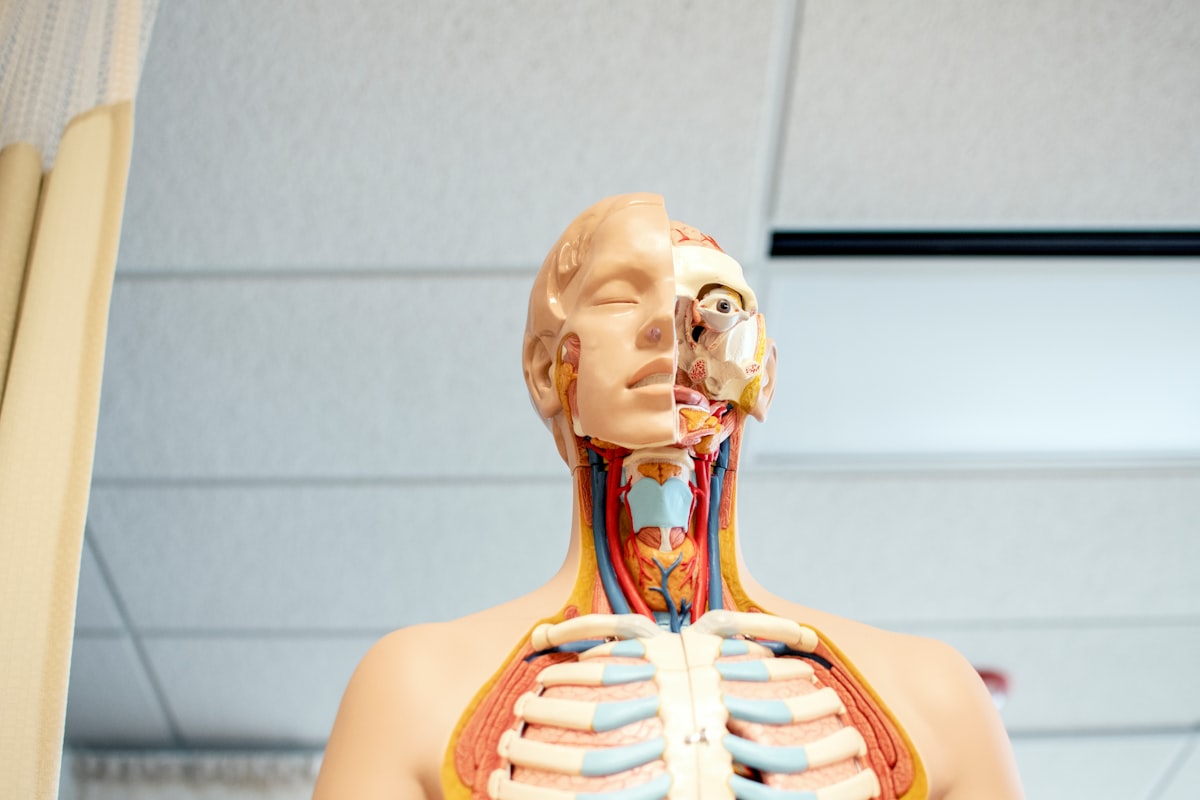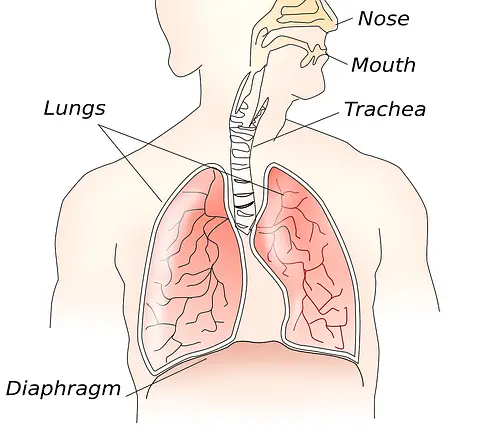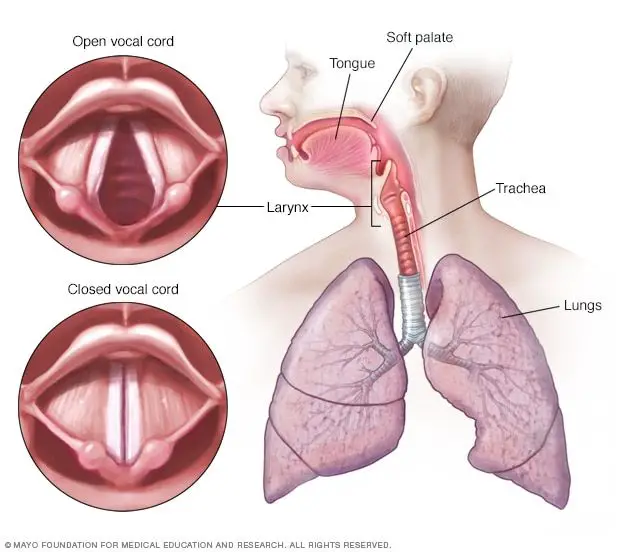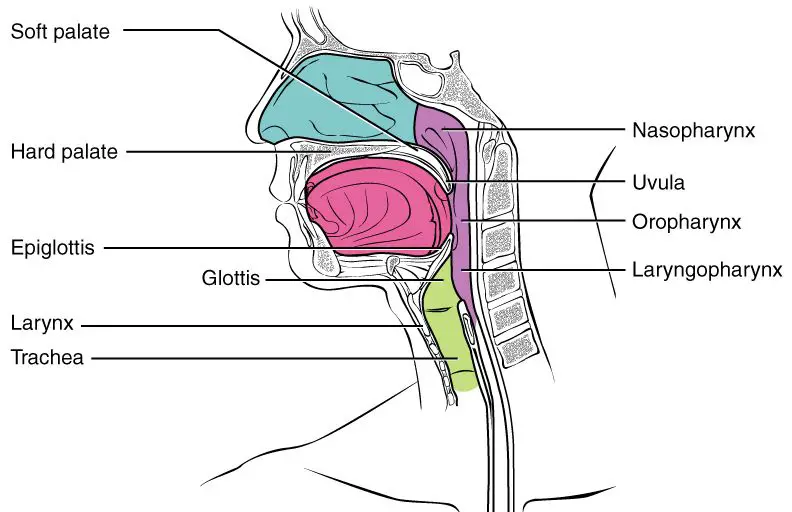Anatomy and Physiology of Voice Production

Instruments produce sound in a mysterious and wonderful way, and the voice is one of the most complex of all. However, the physiology of voice production is not as complicated as you might think. This article aims to take the mystery out of this process so that you can understand how your singing voice works.
Sound is produced by air flowing through the vocal cords when they are just touching, which causes them to vibrate. This air comes from the lungs as you exhale. The pitch of the sound is when the vocal cords are tightened or loosened, which then resonates in the mouth, nose and back of the throat.
You can read more about the physiology of voice production in the article below. You may also be surprised to realise that many other instruments have been modelled from this original design.
Anatomy and Physiology of Voice Production
There are many structures involved in the production of your singing voice, including the tongue, soft palate, oral and nasal cavities, pharynx, larynx and lungs. The larynx contains the vocal cords, which are responsible for producing sound, but the lungs provide airflow and everything above the larynx provides resonance (to amplify the sound).

The Lungs and Diaphragm
The lungs are designed to fill with air, which is controlled mainly by the diaphragm. The diaphragm is a sheet-like muscle that sits under your lungs and above your abdominal organs.
When the diaphragm contracts, the organs are pushed downwards to create more space in the chest. This sucks air in through your mouth and nose to fill the extra space in your lungs with air. A full set of lungs serves two purposes in the body:
- Transfer oxygen from the air into the blood stream
- Provide a reservoir of air to produce sound
As we breathe in, we inhale oxygen that is transferred through the walls of the lungs into the bloodstream. This then gets transported to the rest of the body. However, the main purpose of the lungs when singing is to provide a large reservoir of air that will be used to vibrate the vocal cords when you exhale.
This is the same mechanism used in bagpipes; the bag is filled with air and slowly squeezed to push that reservoir of air through the pipes.
As you exhale, air passes through the larynx and vocal cords. If the vocal cords are wide open, no sound will be produced. However, when the vocal cords are pulled close to one another, the airflow causes them to vibrate. Vibrations are what produces sound when you talk and sing.

The Larynx
The larynx is made up of muscle and cartilage. The cartilage of the larynx houses and anchors the muscles that open, close, tighten and loosen the vocal cords. The vocal cords, which you can see in the image above, open and close for different purposes. Below is a brief summary of their purpose in different positions.
- Vocal cords are fully open: Allows free airflow for breathing. No Sound is produced.
- Vocal Cords are fully closed: Stops airflow for swallowing or coughing. No sound is produced.
- Vocal cords are only just touching: Allows a small around of airflow to vibrate the vocal cords and produce sound for talking or singing.
As air passes through and vibrates the vocal cords, we then have the ability to change the pitch of the sound. Pitch is altered by tightening and loosening the vocal cords (instead of opening and closing them). This mechanism works the same as a guitar string:
- Tightening the vocal cords: increases the pitch (to a higher note).
- Loosening the vocal cords: decreases the pitch (to a lower note).
As long as air is flowing through the vocal cords to vibrate them, the sound will continue. As soon as the air runs out, or the vocal cords are fully opened or closed, the sound will stop. This is because the vocal cords are no longer vibrating.

The Pharynx, Mouth and Nose
Everything above the vocal cords is involved in amplifying and resonating the sound produced by the vocal cords. This anatomy includes five hollow cavities that allow the sound to echo and bounce around, increasing its volume.
This is similar to the body of an acoustic guitar. The vocal cords are like the guitar strings, which produce sound when plucked. But it is only because of the large hollow body of the guitar that the sound can be heard clearly. If you pluck a tight elastic band, for example, you can only just hear the sound.
There are five cavities that resonate sound above the vocal cords, listed below. The larynx contains three of these cavities, which is essentially the back of your throat. The other two cavities are those of the mouth and nose.
- Laryngopharynx
- Oropharynx
- Nasopharynx
- Oral cavity (mouth)
- Nasal cavity (nose)
Manipulating the airflow through these cavities is what creates the tone of your voice. This manipulation is made possible by muscles such as the tongue and soft palate, which can direct more airflow through the mouth or nose. Below is a summary of how this is done.
- More airflow through the nose: The tongue is raised and soft palate lowered to restrict airflow through the mouth. The sound produced is harsher and more piercing. Often referred to as a nasal tone.
- More airflow through the mouth: The tongue is lowered and soft palate raised to restrict airflow through the nose. The sound produced is softer and more rounded.
